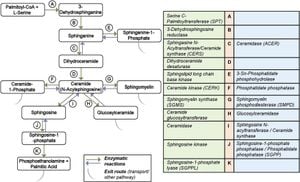With the global population aging rapidly, falls among the elderly have become a significant concern. Addressing this issue, researchers have introduced LFD-YOLO, or Lightweight Fall Detection YOLO, which offers a promising advancement for ensuring the safety of older adults. This innovative model, based on YOLOv5, integrates multiple enhancements, yielding both improved detection accuracy and computational efficiency.
Falls represent one of the leading safety hazards for the elderly, leading to injuries and sometimes fatal consequences. Traditional fall detection methods often rely on complex algorithms, limiting their application on resource-constrained devices commonly found in smart home systems. The newly proposed LFD-YOLO addresses this challenge through its lightweight architecture, making it suitable for deployment on affordable edge devices.
The model employs significant upgrades, including the Cross Split RepGhost (CSRG) module and Efficient Multi-scale Attention (EMA), which focus on reducing information loss during feature extraction and enhancing the detection of human poses. These enhancements allow LFD-YOLO to maintain high accuracy even under varying conditions, like poor lighting or human obstructions.
This study assesses LFD-YOLO against traditional YOLO models and other lightweight fall detection algorithms, illustrating its competitive edge. Experimental results from carefully curated datasets, namely the Person Fall Detection Dataset (PFDD) and the Falling Posture Image Dataset (FPID), indicate LFD-YOLO surpasses its predecessors, increasing the mean Average Precision (mAP) by 1.7% compared to YOLOv5s, and demonstrating comparable improvements over YOLOv8.
One of the major innovations incorporated is the Inner Weighted Intersection over Union (Inner-WIoU) loss function, which aids the model's convergence and enhances its generalization ability across various scenarios. This adaptability is particularly important for accurately detecting falls, which can vary significantly based on angle, lighting, and even prior action patterns.
Another key improvement is found within the model's architecture. The Weighted Fusion Pyramid Network (WFPN) strengthens the integration of feature maps, combating the issue of information loss during fusion across different scales. The result is efficient feature representation and improved performance across various fall scenarios.
Practical demonstrations reveal LFD-YOLO’s robustness against false detections, successfully differentiates fall incidents from similar actions, which is common within human motion analysis models. Visual comparisons confirm LFD-YOLO's efficiency, particularly against background interferences which often challenge traditional techniques.
Future research will continue to address the challenge of enhancing model accuracy amid variable backgrounds and potentially overlapping movement patterns. Researchers anticipate extending LFD-YOLO’s capabilities to broader applications within smart healthcare systems, ensuring safety for the elderly and contributing significantly to quality of life enhancements, particularly through the potential for real-time responsive features.
Through its innovative design and focused enhancements, LFD-YOLO establishes itself as not just another model, but as a potentially transformative solution for fall detection technology.



